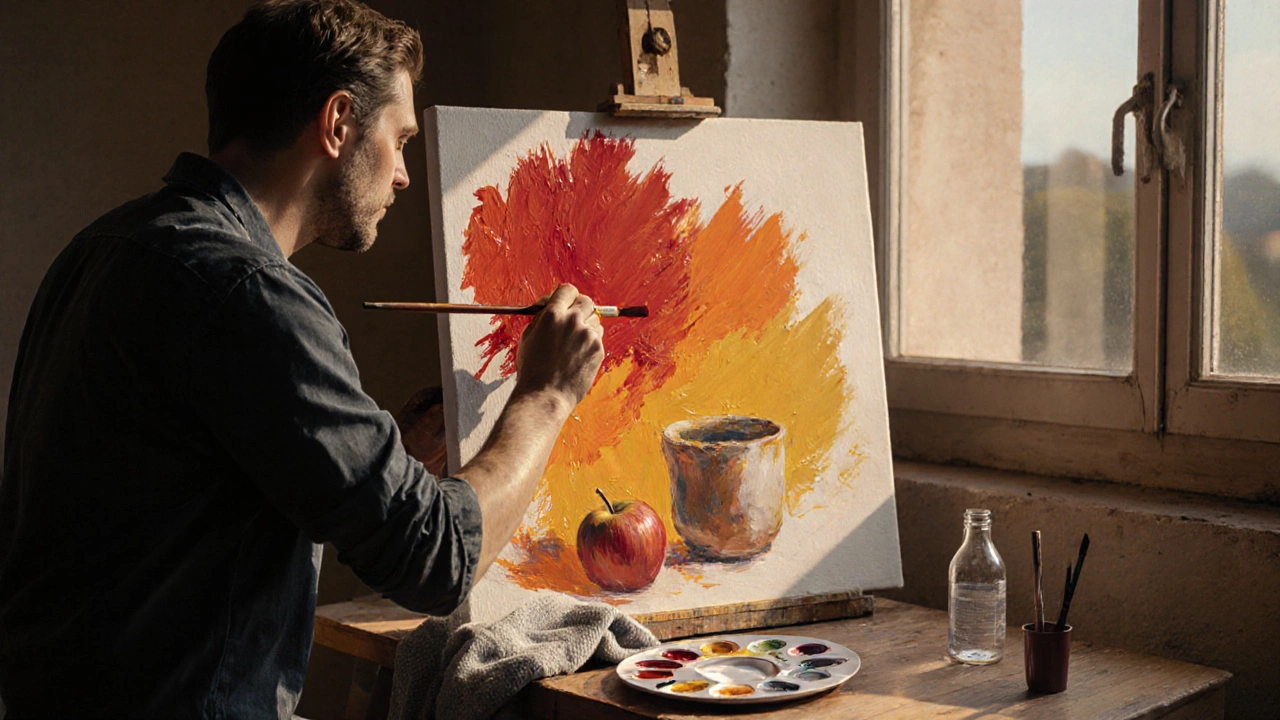Alla Prima Technique: What It Is and How Artists Use It
When artists paint alla prima technique, a direct painting method where wet paint is applied over wet paint in a single session. Also known as wet-on-wet painting, it’s the go-to approach for capturing light, mood, and movement fast—without waiting for layers to dry. This method doesn’t rely on glazes or multi-day builds. Instead, it’s about making bold decisions while the paint is still fresh, letting brushstrokes stay visible and colors stay vibrant.
The alla prima technique is closely tied to oil painting, especially when artists want to work quickly outdoors or capture a fleeting moment. It’s not just for professionals—many beginners use it because it cuts through overthinking. You don’t need perfect blending or layers of underpainting. You just need your brushes, your palette, and the confidence to put paint down and leave it there. It’s the opposite of slow, controlled rendering. Think of it like sketching with paint: loose, honest, and alive.
Artists who use alla prima technique often rely on direct painting principles—mixing colors on the canvas, not just the palette. This creates richer, more natural transitions. It’s why many portrait and landscape painters swear by it. You can see it in the work of artists like John Singer Sargent, who painted entire faces in one sitting. The technique works best with opaque pigments and a limited palette, so you don’t end up with muddy colors. It’s also why many artists avoid using too many mediums—they want the paint to behave predictably while it’s still wet.
There’s a reason this method keeps coming back. It’s fast, it’s honest, and it rewards intuition. Whether you’re painting a still life in your kitchen or a portrait under natural light, alla prima lets you respond to what you see without overworking it. You’ll find that the best results come when you stop trying to make it perfect and start letting it be real.
In the posts below, you’ll see how this technique shows up in real practice—from simple first projects to professional commissions. You’ll learn what tools work best, how to avoid common mistakes, and how to use it to make your paintings feel alive. No theory overload. Just what actually helps you paint better.
